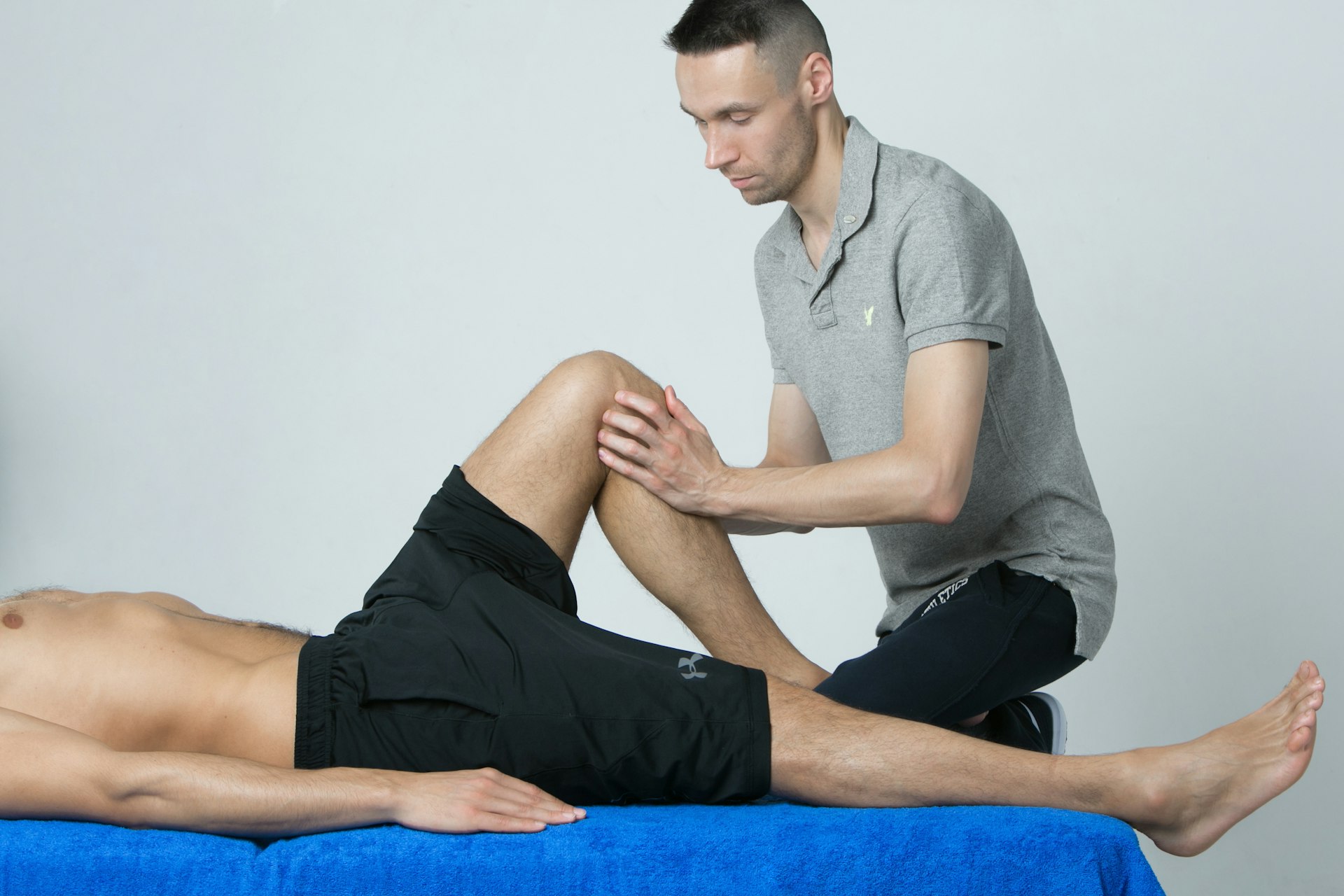Transform Your Wellbeing: Actionable Strategies for Better Posture Every Day

Photo by yury kirillov on Unsplash
Introduction: The Impact of Posture on Wellness
Posture is more than just how you look-it directly affects your health, comfort, and confidence. Poor posture contributes to back and neck pain, decreased mobility, and even impacts your mood and energy levels. Improving posture is a key wellness strategy, offering benefits such as reduced risk of musculoskeletal disorders, improved breathing, and better body image satisfaction [1] . This article presents actionable, science-backed techniques to help you stand taller and feel better every day.
Section 1: Why Good Posture Matters
Proper alignment keeps your muscles and joints healthy, reduces stress on bones, and prevents abnormal wear that can lead to chronic pain or osteoarthritis [3] . A strong, well-aligned body also supports easier breathing and better digestion, enabling you to move and function with less fatigue.
Beyond physical benefits, maintaining better posture can boost your self-confidence and positively influence how others perceive you. It’s a holistic approach to wellness, affecting both your body and your mind.
Section 2: Foundational Strategies for Better Posture
1. Straighten Up: Daily Alignment Habits
Whenever sitting or standing, imagine lining yourself up against a wall: keep your head straight, tuck in your chin, and aim to position your ears over the middle of your shoulders. Pull your shoulders back, keep knees straight but relaxed, and gently draw your belly in [2] . These small adjustments, repeated throughout the day, retrain your muscles to support ideal alignment.
2. Move Around Regularly
Long periods of sitting increase pressure on your spine and discs. Set timers to stand up and stretch every 30-60 minutes. Simple movements such as walking, gentle twists, or shoulder rolls keep your body flexible and reduce tension [3] . Incorporate movement breaks into your workday for lasting results.
3. Ergonomics at Work and Home
Proper workstation setup is crucial. Your chair should support your lower back, and your monitor should be at eye level. Keep your shoulders relaxed and elbows close to your sides. If unsure, consult an occupational therapist or use online guides to assess your workspace ergonomics [2] .
4. Mindful Bending and Lifting
When lifting objects, never bend at the waist. Instead, keep your back straight, bend your knees, and rely on your leg muscles for strength. This technique protects your spine from unnecessary strain and helps prevent injuries [2] .

Photo by April Laugh on Unsplash
5. Sleep for Better Alignment
Your sleeping position affects your posture as well. Side sleepers should keep knees slightly bent with a pillow between them; back sleepers can place a pillow under the knees. Use a pillow that supports the natural curve of your neck and avoid sleeping on your stomach, which strains the back and neck [4] .
Section 3: Exercise Routines for Postural Strength
Regular exercise builds strength and flexibility in the muscles that support proper posture. Yoga and Pilates are especially effective, as they focus on core strength and body awareness [1] . Below are key exercises you can incorporate:
Yoga-Based Postural Exercises
- Child’s Pose : Stretches the spine and relaxes the lower back and neck. Hold for up to five minutes, focusing on deep breathing [1] .
- Cat-Cow : Alternates between arching and rounding the back to improve flexibility and relieve tension [1] .
- Chest Opener : Stretches the chest and strengthens upper back muscles, counteracting slouching.
- High Plank : Develops core and back strength for improved balance and stability. Hold for up to one minute [1] .
- Side Plank : Targets the obliques and glutes, supporting spinal alignment. Hold for 30 seconds per side [1] .
These exercises can be performed at home with minimal equipment. If you’re new to yoga or Pilates, consider joining a local class or following instructional videos from reputable organizations online. Search for certified yoga instructors or physical therapists specializing in posture improvement.
Strengthening Core Muscles
Your core includes the muscles of the abdomen, back, and pelvic floor. Strengthening these areas stabilizes your spine and supports good posture. Try activities like
glute bridges
,
isometric pulls
, and targeted abdominal workouts. Pilates classes or online tutorials from recognized health organizations may be helpful.
Section 4: Mindfulness and Body Awareness
Posture is not just physical-it’s also mental. Mindful practices such as body scans, meditation, or guided imagery can increase your awareness of alignment and tension. Throughout your day, pause to check your posture: are your shoulders relaxed? Is your head aligned with your spine? Conscious correction can become habit over time.
Smartphone reminders or wearable devices can prompt regular posture checks. Some apps and wearables offer feedback on your spinal alignment; search for “posture tracker apps” in your mobile app store for options from established brands.
Section 5: Overcoming Challenges and Staying Consistent
Improving posture is a gradual process. Initial discomfort is common-muscles and joints may need time to adapt. Stick with your routines, and expect gradual improvement over weeks or months [3] . If you experience persistent pain or difficulty, consult a physical therapist or healthcare professional for personalized guidance.
Common challenges include desk jobs, long commutes, and habitual slouching. Solutions include ergonomic adjustments, regular breaks, and using reminders. For those with existing musculoskeletal issues, physical therapy can provide tailored exercises and support.
Section 6: Accessing Professional Resources
Many organizations offer resources for posture improvement. If you need personal assessment, contact a licensed physical therapist or occupational therapist in your area. Most hospital systems and health networks provide directories of specialists-search for “physical therapy services” at your local hospital or through trusted health providers.
For workplace ergonomics, ask your HR department about ergonomic assessments or consult resources from reputable organizations such as the Occupational Safety and Health Administration (OSHA). You can find guidance by searching for “OSHA ergonomics” or visiting the official OSHA website.
Section 7: Step-by-Step Implementation Guide
- Assess Your Current Posture: Use mirrors or smartphone photos to observe alignment. Note areas of tension or slouching.
- Set Up Your Workspace: Adjust your chair, monitor, and desk for optimal ergonomic support. Seek professional assessment if needed.
- Schedule Movement Breaks: Set reminders to get up and stretch every 30-60 minutes.
- Begin a Posture-Focused Exercise Routine: Start with beginner-friendly yoga or Pilates sessions. Gradually add strengthening exercises for your core and back.
- Monitor Sleeping Habits: Adjust pillows and sleeping positions to maintain spinal alignment.
- Practice Mindfulness: Use daily reminders or body scans to check and correct your posture throughout the day.
- Seek Professional Support: If you experience ongoing discomfort, contact a physical therapist or occupational therapist for personalized guidance.
Conclusion: Take Control of Your Posture and Wellbeing
Improving posture is a journey that enhances your overall wellness and quality of life. By incorporating these actionable strategies, adjusting your environment, and staying mindful, you can reduce pain, boost confidence, and move through life with greater ease. For additional support, seek guidance from certified professionals or reputable health organizations.
References
MORE FROM hotondeals.com













